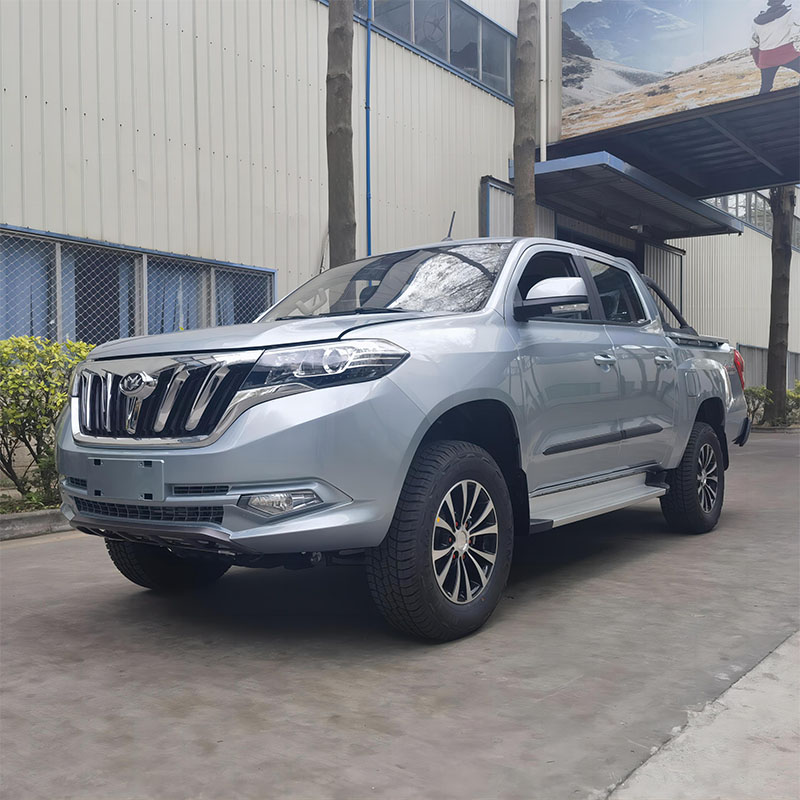Electric Pickups: Breaking Down the Myths and Realities
2024-07-22
Electric pickups are rapidly gaining popularity, but with any emerging technology, there are always myths and misconceptions. In this blog, we will debunk some of the common myths surrounding electric pickups and highlight the realities that make them a compelling choice for modern drivers.

Myth 1: Electric Pickups Lack Power and Performance
Reality: One of the most persistent myths about electric vehicles is that they lack the power and performance of their gasoline or diesel counterparts. However, electric pickups like the Tesla Cybertruck and Rivian R1T have shattered this misconception. These vehicles deliver impressive horsepower and torque, offering quick acceleration and substantial towing capacities. The instant torque provided by electric motors ensures that electric pickups can outperform many traditional trucks in various performance metrics.
Myth 2: Electric Pickups Have Limited Range
Reality: Range anxiety is a common concern for potential EV buyers, but advancements in battery technology have significantly improved the range of electric pickups. For example, the Ford F-150 Lightning offers an estimated range of up to 300 miles on a single charge, while the GMC Hummer EV boasts over 350 miles. Additionally, the growing network of fast-charging stations makes it easier than ever to recharge during long trips, reducing the worry about running out of power.
Myth 3: Electric Pickups Are Too Expensive
Reality: While it's true that electric pickups can have a higher upfront cost compared to traditional trucks, it's essential to consider the total cost of ownership. Electric vehicles generally have lower maintenance costs because they have fewer moving parts and don't require oil changes. Moreover, electricity is often cheaper than gasoline or diesel, resulting in lower fuel costs over time. Many governments also offer incentives and rebates for purchasing electric vehicles, further offsetting the initial cost.
Myth 4: Electric Pickups Aren't Durable or Reliable
Reality: Electric pickups are designed to be just as durable and reliable as their ICE counterparts. Many electric pickups are built with rugged materials and advanced features to withstand harsh conditions and demanding workloads. For example, the Tesla Cybertruck's exoskeleton is made from ultra-hard 30X cold-rolled stainless steel, providing exceptional strength and durability. Additionally, electric drivetrains have fewer components that can wear out, potentially leading to greater reliability and longevity.
Myth 5: Charging an Electric Pickup Is Inconvenient
Reality: Charging infrastructure for electric vehicles has improved dramatically in recent years. There are now thousands of public charging stations available, and many offer fast-charging capabilities that can replenish a significant portion of the battery in just 30 minutes. Home charging solutions are also becoming more accessible and affordable, allowing owners to conveniently charge their electric pickups overnight. Innovations like wireless charging and ultra-fast charging networks are expected to make the process even more convenient in the future.
Myth 6: Electric Pickups Can't Handle Off-Road Conditions
Reality: Electric pickups are well-suited for off-road adventures. Many models come equipped with advanced features like adjustable air suspensions, all-wheel-drive systems, and robust chassis designs that enhance off-road performance. The Rivian R1T, for instance, offers a quad-motor setup that provides precise control and impressive traction on challenging terrains. Electric pickups can deliver the ruggedness and capability needed for serious off-road enthusiasts.
Conclusion
Electric pickups are breaking down the barriers of myths and misconceptions, proving that they are a viable and attractive option for a wide range of drivers. From power and performance to cost efficiency and sustainability, the realities of electric pickups make them a compelling choice for those looking to embrace the future of transportation. As technology continues to evolve, electric pickups will only become more capable and accessible, paving the way for a cleaner, more efficient automotive landscape.


